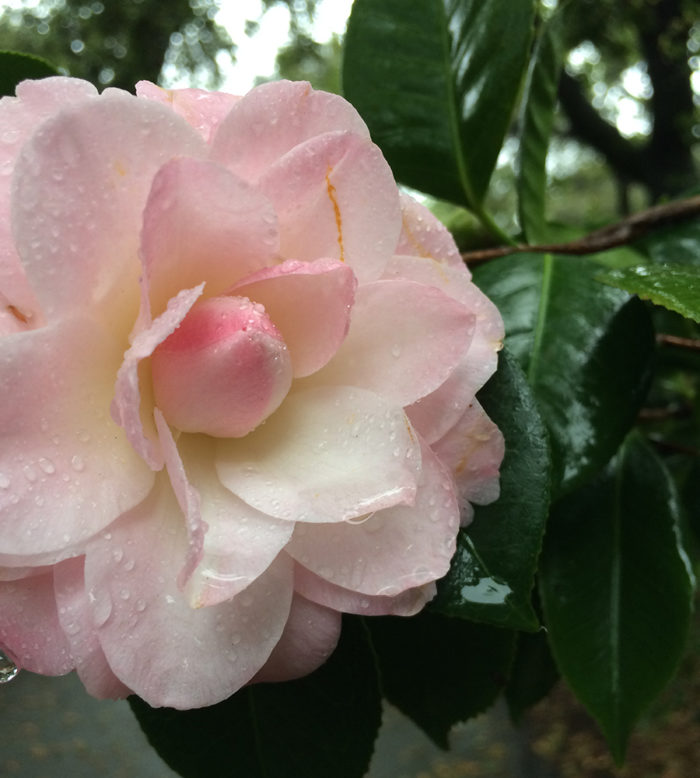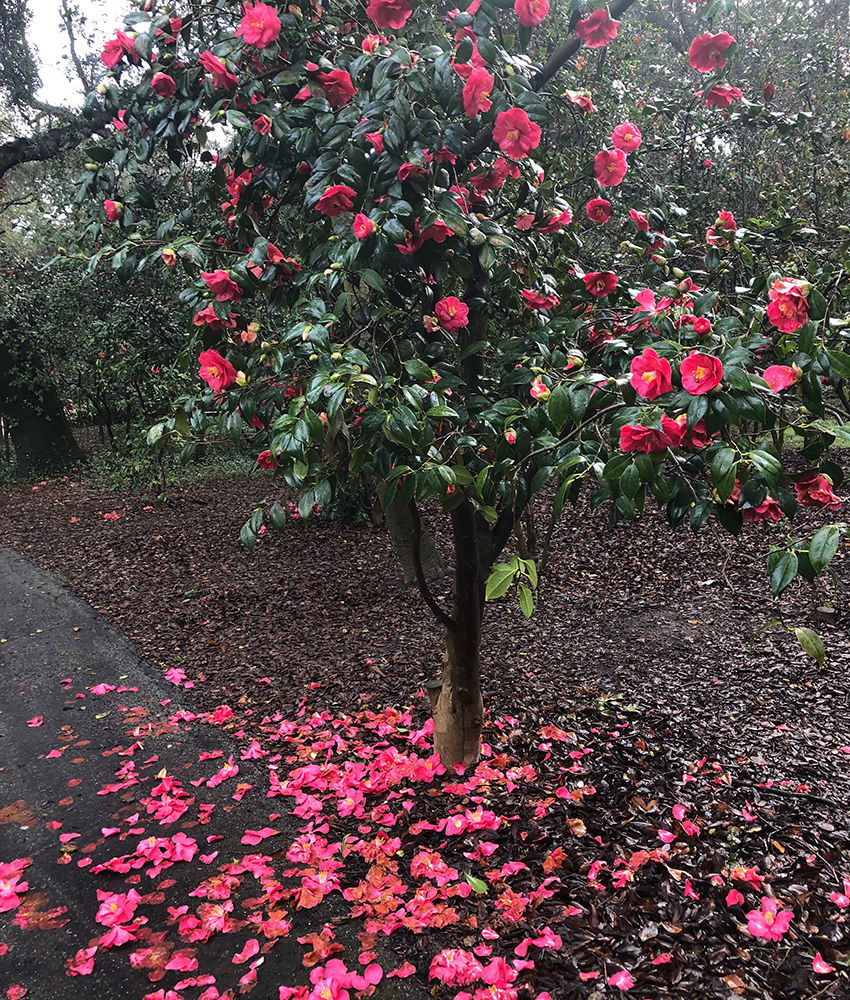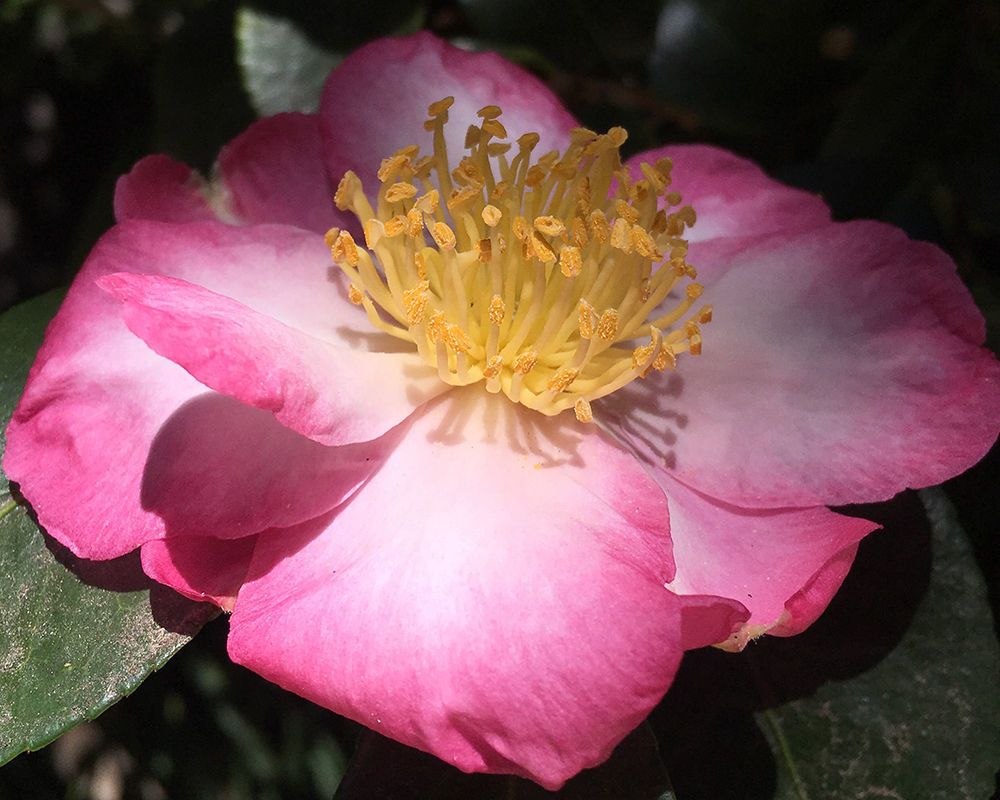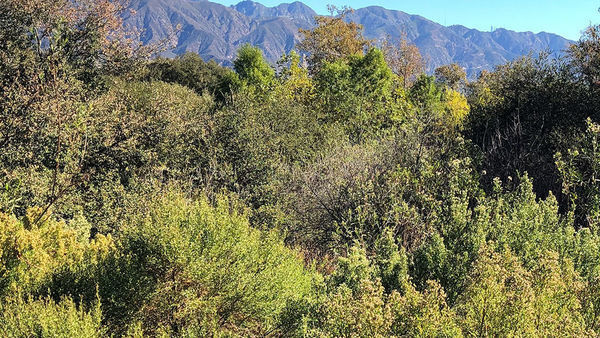
Spring has arrived, and we are on our way to summer, so most gardeners are not thinking about their camellias (Camellia spp. and cvs., Zones 6-10). However, May and June, after camellias have finished blooming, is the best time to prune them. If you wait too long, you could end up cutting off next years’ flower buds. Camellias push new foliar growth in the summer months, so late spring is a great time to give your shrubs a haircut, ensuring they bloom well next year.
Grab the pruners when the last petal falls

As soon as the last flower has past, you can begin pruning. First, make sure you understand which type of camellia you have. Camellia japonica, the most common type, has medium-size, glossy green-black leaves and large formal blooms. Camellia sasanqua has smaller leaves and more delicate blooms—the petals fall easily from the plant, similar to a cherry blossom. Camellia reticulata has the largest blooms and leaves, and the shrubs have an overall leggier look. C. japonica and C. sasanqua don’t mind regular pruning, but C. reticulata doesn’t respond as well to pruning, and you should only remove any dead, damaged, or diseased wood.
Thinning is the ultimate goal

Similar to roses, pruning camellias is about creating space not for air circulation, but to allow for filtered light to penetrate the plant. Thinning one in every three to five small branches (secondary branches) should create room and encourage blooms on the lower areas of the plant. Camellias are slow growers, so I generally recommend avoiding cutting larger limbs. If that is necessary, however, most camellias will grow back well in a few years. Pruning back large limbs (or renovation pruning) of camellias will result in large numbers of sprouts, which will need to be thinned out after two to three years.
Don’t forget the after care

After pruning, add an organic fertilizer for acid-loving plants, such as cottonseed meal or Hollytone. Adding iron, from blood meal or an iron-rich fertilizer, can help camellias suffering from nutrient deficiencies (if you are noticing any foliar issues, contact your local extension service for help identifying a possible nutrient deficiency). Camellias benefit from adding compost and a nice layer of mulch, since they have shallow roots that need to be protected from drying out in the hot summer months.
If all goes well with your pruning and fertilizing, you can expect to see new leaves and flower buds begin to appear by midsummer.
Rachel Young is the former Director of Horticulture and Garden Operations at Descanso Gardens in La Cañada, California.
Fine Gardening Recommended Products

A.M. Leonard Deluxe Soil Knife & Leather Sheath Combo
Fine Gardening receives a commission for items purchased through links on this site, including Amazon Associates and other affiliate advertising programs.



















Comments
Hi. I recently found a site https://luckybet.jp/keiba/ where you can see reviews of popular bookmakers. With his help, I was able to find a site where I bet on the races. So now I have already chosen the best horses and am making money.
Log in or create an account to post a comment.
Sign up Log in